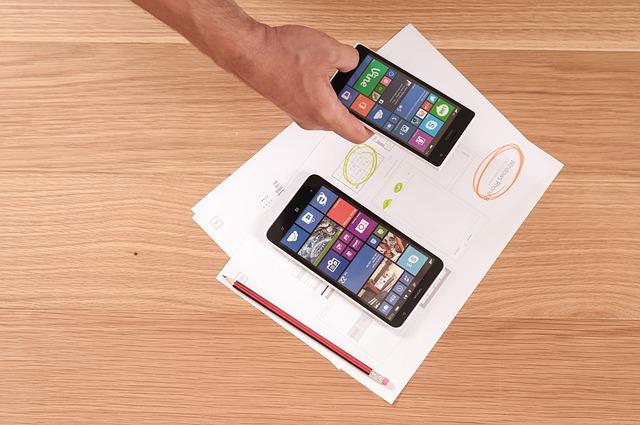Introduction to Branding and Web Design
In the contemporary digital landscape, branding and web design are two interrelated components that play crucial roles in establishing a company’s presence and identity online. Branding encompasses the elements that create an emotional connection with consumers, including a company’s name, logo, tone, and overall messaging. It is essentially the perception that exists in the minds of consumers regarding a particular business or product. Effective branding results in recognizable and memorable identities that resonate with target audiences. This established identity fosters consumer trust and loyalty, which are essential for long-term success.
On the other hand, web design refers to the aesthetic and functional aspects of a website. This encompasses layout, color scheme, typography, and imagery, all of which contribute to the user experience. A well-designed website is not only visually appealing but also intuitive and easy to navigate. In today’s digital marketing environment, a business’s website often serves as the first interaction potential customers have with the brand. Therefore, it must accurately reflect the branding elements and convey the company’s message clearly and effectively.
The synergy between branding and web design is undeniably vital. A cohesive brand image that is mirrored in the web design helps to reinforce recognition and build credibility. Consistency across both avenues ensures that potential customers can easily identify and engage with the brand, leading to increased user engagement and higher conversion rates. Moreover, a website that aligns with the established brand can influence how consumers perceive the quality and relevance of the products or services offered. Ultimately, understanding the connection between branding and web design is essential for businesses striving to thrive in a competitive digital marketplace.
The Role of Branding in Web Design
Branding plays a crucial role in web design by serve as the foundation upon which an online presence is built. Elements such as logos, color schemes, and typography are not only aesthetic choices but are also pivotal factors that communicate a brand’s values and personality. A well-implemented branding strategy can directly influence user experience and engagement, setting the tone for how visitors perceive and interact with a website.
Logos are often the most recognizable aspect of a brand. They encapsulate the essence of the company and need to be prominently featured within web design. When users encounter a logo consistently across various platforms—be it a website, social media, or print materials—they develop a sense of familiarity and trust. A logo designed thoughtfully can enhance brand recall, allowing potential customers to easily associate it with particular products or services.
In addition, the choice of color schemes significantly impacts web design, as colors evoke emotions and convey messages. For example, vibrant colors may suggest creativity and energy, while muted tones might portray sophistication and reliability. Consistency in color usage enhances brand recognition; a company that uses the same palette across its website and marketing collateral strengthens its identity in the minds of consumers.
Typography also carries branding significance. The typefaces selected for a website should reflect the brand’s character while ensuring readability. Brands such as Apple use sleek, modern fonts that align with their innovative image, fostering a seamless connection between their visual identity and user experience. By integrating these branding elements thoughtfully within web design, businesses can foster a cohesive and engaging online presence.
Creating a Cohesive Brand Identity
Establishing a cohesive brand identity is fundamental to the success of any business, particularly in the digital landscape where competition is fierce. A strong brand identity encompasses various components, including voice, imagery, and messaging, all of which must be aligned to create a unified experience for the audience. Web design plays a pivotal role in this process, serving as the platform where these elements converge.
The voice of a brand refers to the tone and style of communication used across platforms. When designing a website, it’s crucial to maintain a consistent voice that resonates with the target audience. Whether the brand is professional, quirky, or empathetic, ensuring that this voice is reflected in the web content, headers, and calls to action can enhance user engagement and brand recall. Additionally, this allows visitors to form an emotional connection with the brand, further cementing its identity in their minds.
Imagery also contributes significantly to brand identity. The choice of colors, fonts, and images can evoke specific emotions and associations. For instance, a calm color palette may convey serenity, while bold colors might communicate excitement or innovation. A well-designed website should incorporate these graphical elements consistently, mirroring the brand’s overall aesthetic in promotional materials and social media platforms. Doing so not only creates a visually appealing experience but also nurtures familiarity and recognition among audiences.
The messaging is another crucial component of brand identity that should be harmonized across the web design. Clear and concise messaging that reflects the brand’s values and mission can articulate the brand’s unique selling proposition effectively. By ensuring that key messages are consistently showcased throughout the website, a brand can communicate its purpose and build trust with its audience.
In conclusion, achieving a cohesive brand identity through web design is essential for a brand’s visibility and reputation. By aligning voice, imagery, and messaging, businesses can create a lasting impact that resonates with their audience and strengthens their market presence.
User Experience and Branding
User experience (UX) is a critical component in establishing a strong connection between branding and web design. It encompasses every interaction a user has with a brand through its digital platforms. A well-designed UX not only enhances usability but also significantly influences brand perception and loyalty. When users engage with a website, their overall satisfaction and emotional response can directly impact their view of the brand.
One of the primary facets of effective UX design is seamless navigation. Websites that prioritize intuitive navigation allow users to find the information they seek effortlessly. This ease of use is vital; when users can quickly access relevant content, they are more likely to associate the brand with positive qualities such as efficiency and reliability. In contrast, complicated navigation can lead to frustration, driving users away and tarnishing the brand’s image.
Moreover, providing accessible information enhances UX by ensuring that users can readily obtain the details they need without unnecessary obstacles. This includes mobile responsiveness, fast loading times, and clear calls to action, all of which align with a brand’s commitment to customer satisfaction. By ensuring that users can effortlessly navigate through a brand’s digital presence, companies reinforce their branding message, showcasing commitment and reliability.
In addition to functionality, the aesthetic appeal of a website plays a significant role in user experience. The visual design should resonate with the brand’s values and identity, creating a cohesive experience that enhances user engagement. Colors, typography, and images should align with the brand’s overall aesthetic to foster a deeper emotional connection. When users feel that the design embodies the brand, it increases their likelihood of developing loyalty and a lasting relationship.
In conclusion, enhancing user experience through effective design not only improves usability but strengthens the connection between branding and web design, driving brand loyalty and perception positively.
Emotional Connection Through Design
Web design plays a critical role in establishing an emotional connection between users and brands. By carefully considering the choice of colors, shapes, and overall layout, brands can evoke specific emotions that align with their messaging and core values. This phenomenon can be traced back to psychological principles, where different colors have the ability to trigger varying emotional responses. For instance, the color blue is often associated with trust and professionalism, while red can evoke feelings of excitement and urgency.
Moreover, the shapes utilized in web design contribute significantly to how users perceive a brand. Soft, rounded shapes often convey a sense of warmth and friendliness, making them more approachable. Conversely, sharp angles and geometric designs can project sophistication and efficiency, appealing to a different demographic. The combination of these elements ensures that users not only visit a website but also feel a sense of belonging and connection with the brand’s identity.
Layout is another crucial factor in enhancing emotional engagement. A well-structured layout guides the user’s journey through the website, making it easier for them to absorb the information presented. When users can navigate seamlessly and effortlessly, they are more likely to develop a favorable perception of the brand. A chaotic or overly complex design can lead to frustration, causing potential customers to leave without forming any meaningful connection.
Ultimately, the goal of web design within the realm of branding is to foster a memorable user experience that resonates emotionally with visitors. When aligned effectively with a brand’s messaging and values, the design translates into an enriched customer experience. This, in turn, nurtures stronger emotional tie-ins, promoting lasting loyalty and positively influencing the overall perception of the brand in the minds of consumers.
The Impact of Responsive Design on Branding
Responsive web design has become a pivotal element in the quest for effective branding in today’s digital landscape. With the proliferation of various devices—ranging from smartphones to tablets and desktops—users access content in diverse formats and contexts. This shift necessitates that brands cultivate a seamless user experience regardless of the platform being utilized. Responsive design refers to the approach that enables websites to adapt seamlessly to different screen sizes, thereby optimizing the viewing experience.
The significance of responsive design extends beyond mere aesthetics; it plays a crucial role in preserving brand integrity. A website that maintains uniformity in its design elements—such as logos, colors, and typography—across various devices fosters a coherent brand identity. This consistency not only reinforces brand recognition but also enhances user trust. When users encounter a visually compelling and responsive site, they are more likely to associate positive sentiments with the brand. Conversely, a disjointed user experience can generate frustration, which ultimately diminishes the brand’s perceived value.
Moreover, search engines like Google prioritize mobile-friendly websites in their rankings, thus affecting a brand’s visibility and reach. A responsive design ensures that the site performs optimally across platforms, which can lead to increased traffic and engagement. As users encounter a responsive interface, they are empowered to navigate smoothly, leading to improved retention rates and a higher likelihood of repeat interactions. In summary, an effective responsive web design is crucial for maintaining a strong brand image and message across various devices, aligning visual consistency with user experience to foster a robust online presence.
Case Studies: Successful Branding Through Web Design
The relationship between branding and web design is pivotal for companies striving to establish a robust online presence. Examining several case studies reveals how effective strategies have been employed to create harmonious connections between branding elements and website layouts.
One prominent example is Airbnb, which has effectively utilized branding integrated with web design to convey its core value of belonging. The design emphasizes user-friendly navigation and a clean aesthetic, allowing users to seamlessly explore and book accommodations. A strategic use of visual elements and typography amplifies the brand’s message, ultimately enhancing user engagement and loyalty.
Another illustrative case is that of Nike. The company has executed a cohesive branding strategy through its website, which showcases bold imagery and powerful messages that echo its “Just Do It” ethos. Nike’s web design not only captures the brand’s essence but also engages visitors through interactive features, showcasing products dynamically. The alignment of branding with design ensures that users experience a sense of inspiration and motivation upon visiting the site.
Similarly, the global coffee chain Starbucks has seamlessly integrated branding into its website design. The use of earthy colors, elegant fonts, and engaging storytelling enhances the sensory experience of the brand that customers have in-store. By prioritizing a consistent aesthetic across platforms, Starbucks effectively strengthens its brand identity, resulting in increased customer retention and engagement.
In each of these cases, the companies faced challenges such as balancing aesthetics with functionality and ensuring brand message consistency across various digital touchpoints. However, by leveraging web design as a powerful branding tool, these organizations have successfully navigated these hurdles, delivering meaningful and engaging experiences that resonate with their audiences. Such successful branding through web design not only reinforces their brand identity but also drives business growth and customer loyalty.
Common Mistakes to Avoid
The integration of branding and web design is a critical process, yet many businesses encounter pitfalls that can be detrimental to their success. One significant mistake involves inconsistency in branding elements across digital platforms. When businesses fail to maintain uniformity in color schemes, fonts, and imagery, it creates a disjointed user experience. This inconsistency can confuse potential customers, undermine brand recognition, and ultimately detract from the overall effectiveness of marketing efforts.
Another common error is neglecting user experience (UX). A website that lacks intuitive navigation, quick loading times, and responsive design can lead to higher bounce rates. It is essential to prioritize UX in web design, ensuring that visitors can easily access information about products or services and engage with the brand. By considering the user journey and addressing usability, businesses can foster a more engaging online environment that aligns with branding objectives.
Furthermore, failing to adapt to market trends is a misstep that can significantly hinder a brand’s growth and relevance. In today’s fast-paced digital landscape, consumer preferences and design aesthetics evolve rapidly. Companies must stay attuned to these changes and refresh their web design and branding strategies accordingly. Regularly evaluating competitors and industry benchmarks can provide insights that facilitate timely updates, ensuring the brand keeps pace with or even leads the market.
To overcome these challenges, businesses should establish clear branding guidelines that dictate the consistent use of visual and textual elements. Investing in user research and design audits can facilitate a deeper understanding of customer needs. Additionally, staying informed about emerging trends through continuous education and networking can empower brands to make informed decisions and adapt timely. By acknowledging these common mistakes and implementing proactive strategies, organizations can improve their branding and web design integration, enhancing both user satisfaction and brand loyalty.
Future Trends in Branding and Web Design
The relationship between branding and web design continues to evolve, driven by advancements in technology and shifts in consumer behavior. As we look ahead, several key trends are poised to influence how brands present themselves online. One of the most significant changes is the increasing prominence of artificial intelligence (AI) and machine learning in design processes. These technologies are enabling designers to create more personalized experiences tailored to individual user preferences, thereby enhancing brand engagement.
Another trend gaining momentum is the focus on sustainability and ethical branding. Consumers are increasingly gravitating towards brands that reflect values of transparency, social responsibility, and environmental consciousness. Companies are likely to incorporate these values into their web design, utilizing eco-friendly color schemes, sustainable design practices, and content that highlights their commitment to these issues. This alignment not only enhances brand identity but also resonates with a conscientious consumer base.
Moreover, the rise of mobile-first design remains crucial as consumers rapidly shift their browsing habits towards mobile devices. Websites need to be fully optimized for smaller screens while maintaining a strong brand presence, ensuring that the core identity is communicated effectively across all platforms. This includes responsive layouts, fast loading times, and user-friendly navigation, which are essential components of modern web design.
Finally, the aesthetic direction is moving towards more immersive experiences, incorporating elements such as augmented reality (AR) and virtual reality (VR) into web design. These innovations allow brands to create captivating environments that not only showcase products but also tell compelling stories. As technological advancements continue to unfold, brands must be prepared to integrate these immersive designs to maintain relevance and appeal to evolving consumer preferences.
Overall, staying informed about these trends and being adaptable in responding to them is vital for both brands and web designers as they seek to enrich their connection in a dynamic digital landscape.





